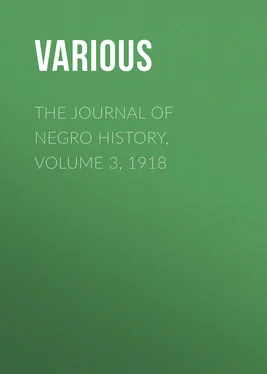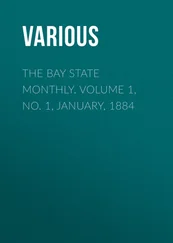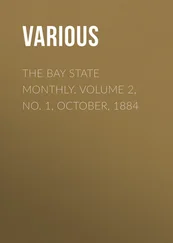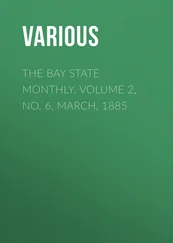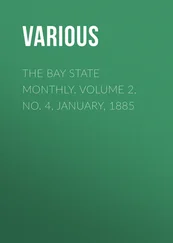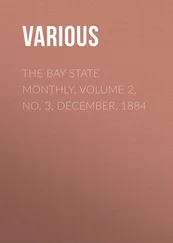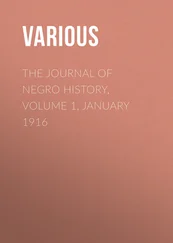Various - The Journal of Negro History, Volume 3, 1918
Здесь есть возможность читать онлайн «Various - The Journal of Negro History, Volume 3, 1918» — ознакомительный отрывок электронной книги совершенно бесплатно, а после прочтения отрывка купить полную версию. В некоторых случаях можно слушать аудио, скачать через торрент в формате fb2 и присутствует краткое содержание. Жанр: foreign_antique, periodic, История, foreign_edu, на английском языке. Описание произведения, (предисловие) а так же отзывы посетителей доступны на портале библиотеки ЛибКат.
- Название:The Journal of Negro History, Volume 3, 1918
- Автор:
- Жанр:
- Год:неизвестен
- ISBN:нет данных
- Рейтинг книги:5 / 5. Голосов: 1
-
Избранное:Добавить в избранное
- Отзывы:
-
Ваша оценка:
- 100
- 1
- 2
- 3
- 4
- 5
The Journal of Negro History, Volume 3, 1918: краткое содержание, описание и аннотация
Предлагаем к чтению аннотацию, описание, краткое содержание или предисловие (зависит от того, что написал сам автор книги «The Journal of Negro History, Volume 3, 1918»). Если вы не нашли необходимую информацию о книге — напишите в комментариях, мы постараемся отыскать её.
The Journal of Negro History, Volume 3, 1918 — читать онлайн ознакомительный отрывок
Ниже представлен текст книги, разбитый по страницам. Система сохранения места последней прочитанной страницы, позволяет с удобством читать онлайн бесплатно книгу «The Journal of Negro History, Volume 3, 1918», без необходимости каждый раз заново искать на чём Вы остановились. Поставьте закладку, и сможете в любой момент перейти на страницу, на которой закончили чтение.
Интервал:
Закладка:
25
California Laws, 1849-50, p. 408.
26
Ibid. , p. 408.
27
Bancroft, " History of California ," VI, p. 313.
28
Ibid. , p. 313.
29
The Californian , March 16 and Nov. 4, 1848.
30
Bancroft, " History of California ," p. 287.
31
Jour. Cal. Leg. , 1850, 372-373.
32
Cong. Globe , 1849-50, App., pt. I, 149-157.
33
Tuthill, " History of California ," p. 320.
34
Bancroft, " History of California ," VI, pp. 252-253.
35
Ibid. , p. 595.
36
Many Negroes were returned to slavery by the Courts. An owner of slaves in Mississippi brought them voluntarily into California before the adoption of the Constitution by the State. The slaves asserted their freedom and for some months were engaged in business for themselves. The owner under the provision of the Fugitive Slave Act of 1852 brought them before the Justice of Peace, who allowed the claim of the owners and ordered them into his custody. The slaves then petitioned for a writ of habeas corpus which came before the Supreme. Court and after hearing the case the Court ordered that the writ be dismissed and the slaves remanded to their owners.— California Reports , II, 424-426.
The case of Alvin Coffey is equally as interesting. This account was given by a lifelong friend of the subject.
Alvin Coffey was born in 1822, in Saint Louis, Missouri. He came to California with his sick master, a Mr. Duvall, who landed in San Francisco, September 1, 1849. They went to Sacramento, October 13, 1849. During the next eight months the slave earned for his master $5,000, working in the mines, and by washing for the miners and mining for himself after night, he earned $700 of his own. As the master continued in poor health he decided to return with Alvin to Missouri at the expiration of two years. When they reached Kansas City, Missouri, the master sold Alvin to Nelson Tindle, first taking from him the $5,000, earned for the master, and also the $700 earned for himself.
Nelson Tindle took a great liking to Alvin and in a short time made him overseer over a number of slaves. Alvin, however, longed to return to California and, in order to earn his freedom, bought his time from his master and took contracts to build railroads. One day Nelson Tindle said to Alvin that he was too smart a man to be a slave and ought to try and purchase his freedom. Whereupon Alvin told him if he would let him return to California, he could easily earn enough money to effect the purchase. Alvin was permitted to return to California, and in a short time sent his master the $1,500 to pay for his freedom. Alvin then undertook to earn the money to pay for the freedom of his wife and daughters, who were slaves of Doctor Bassett, of Missouri. He earned the required sum and returned for his family. After paying for their freedom, he went with them to Canada, where he left his daughters to be educated. He and his wife Mahalia came to California. It cost him for the freedom of himself and family together with the trips to and from California about $7000. See Bancroft, " History of California ," VI, p. 382.
37
Some of these cases are more than interesting. Daniel Rodgers came across the plains with his master from Little Rock, Arkansas, worked in the mines in Sonora, California, during the day for his master and at night for himself, earning and paying his master $1,100 for his freedom. Soon afterward the master returned with him to Little Rock and sold him. A number of the leading white gentlemen of Little Rock raised a sum of money, paid for his freedom and set him free. William Pollock and wife from North Carolina came to California with their master who located at Cold Springs, Coloma, California. He paid $1,000 for himself and $800 for his wife. The money was earned by washing for the miners at night and making doughnuts. They removed to Placerville, California, and afterward earned their living as caterers. In 1849, a slaveholder brought his slave to California. Not wishing to take the Negro back to his native State, Alabama, he concluded to sell him by auction. An advertisement was put in the papers, the boy was purchased for $1,000, by Caleb T. Fay, a strong abolitionist, who gave the boy his freedom.
A Mississippi slaveholder brought several slaves from that State and promised to give them their freedom in two years. They all ran away save one, Charles Bates, when they learned that they were already free. The owner, finding mining did not pay, started east, taking Charles with him. On the Isthmus of Panama, Charles was persuaded to leave his master. He returned to California and to Stockton with his true friend. On the street one day he was recognized by a party who had lent money to Charles's master. The debtor got out an attachment for the former slave as chattel property, and according to the State law, the Negro was put up and sold at auction. A number of anti-slavery men bought the boy for $750 and gave him his freedom.— California Reports , I, 424-426.
38
Bancroft, " History of California ," VI, p. 716.
39
Bancroft, " History of California ," VI, p. 716.
40
Ibid. , VI, p. 716.
41
These Documents were collected by Miss D. L. Beasley and M. N. Work.
42
Miscellany , p. 35.
43
Miscellany , p. 545.
44
This paper is from the collection of 105 in the Court House at Eureka. Austin Wiley, whose name appears in the document, was later appointed Superintendent of Indian Affairs for California; and during his term of office did much to bring to a satisfactory termination the trouble then existing between the settlers and the natives.
45
Miscellany , p. 541.
46
These are freedom papers as recorded in the California County Court records, and as they have been found by the California Archivist, Mr. Owen Coy.
47
This court record was obtained by Mr. W. N. Work.
48
Ford edition of Jefferson's Writings , III, p. 102.
49
" Rights of British America ," Ford edition of Jefferson's Writings , I, p. 440.
50
"This clause," says Jefferson, in his Autobiography (I, p. 19), "was struck out in complaisance to South Carolina and Georgia, who had never attempted to restrain the importation of slaves, and who, on the contrary, still wished to continue it. Our northern brethren, also, I believe, felt a little tender under those censures; for though their people had very few slaves themselves, yet they had been pretty considerable carriers of them to others."
51
"Their amalgamation with the other color," said he, "produces a degradation to which no lover of excellence in the human character can innocently consent."—Ford edition of Jefferson's Writings , IX, p. 478.
52
Ford edition of Jefferson's Writings , III, p. 243.
53
Ibid. , III, p. 250.
54
Ford edition of Jefferson's Writings , IX, p. 303.
Читать дальшеИнтервал:
Закладка:
Похожие книги на «The Journal of Negro History, Volume 3, 1918»
Представляем Вашему вниманию похожие книги на «The Journal of Negro History, Volume 3, 1918» списком для выбора. Мы отобрали схожую по названию и смыслу литературу в надежде предоставить читателям больше вариантов отыскать новые, интересные, ещё непрочитанные произведения.
Обсуждение, отзывы о книге «The Journal of Negro History, Volume 3, 1918» и просто собственные мнения читателей. Оставьте ваши комментарии, напишите, что Вы думаете о произведении, его смысле или главных героях. Укажите что конкретно понравилось, а что нет, и почему Вы так считаете.
